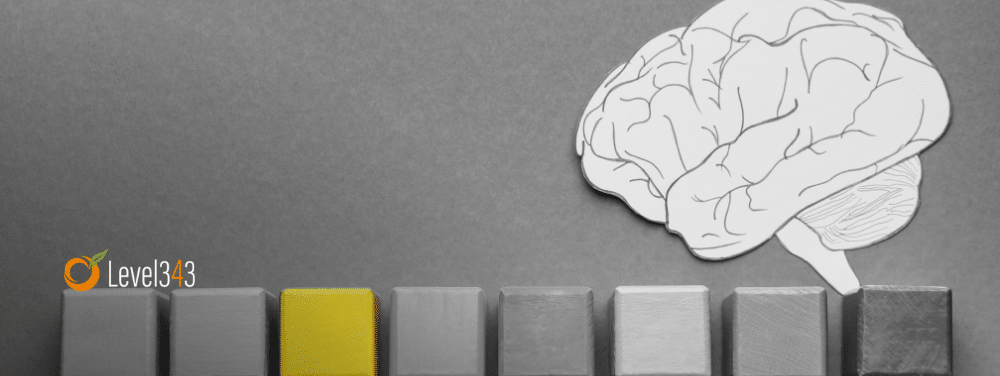Last week, we explored various strategies on how to transform readers into customers, diving into effective techniques that encourage engagement and conversion. As promised, we’re delving deeper into the fascinating realm of buyer psychology today.
We’ll examine the triggers and human behaviors, particularly focusing on positive reinforcement and voluntary actions, that prompt people to make purchasing decisions. I always stick to my word, so let’s get started on uncovering these critical insights.
Lets Talk, about the Law of Effect
There’s something about behavior. When it comes to buyer psychology. How influence shapes our actions… It’s intriguing how we tend to label occurrences as laws akin to how Newton observed the fall of an apple and established the law of gravity.
Edward Thorndike noticed a recurring pattern in conduct which he termed the Law of Effect. Simply put if an action leads to outcomes we are inclined to repeat it; conversely if it results in consequences we are less likely to repeat it.
To illustrate this concept with an anecdote (stay tuned for details in a future blog post);
Lately we’ve been receiving inquiries from businesses seeking optimization services. Nothing, out of the ordinary or surprising right?The phone calls now have a vibe compared to before. These companies once blindly trusted optimization firms only to realize they were given promises.
When they reach out to us they are cautious and skeptical. They question everything. Only believe a couple of answers. They’ve had experiences, with hiring professional SEO experts” in the past leading them to become hostile towards other potential firms.
They have become wary of putting their trust in anyone. They are not fond of feeling fearful. Their frustration is evident. This clearly demonstrates the Law of Effect.
Building on Thorndikes work B.F. Skinner introduced the concept of conditioning suggesting that our actions are influenced by their consequences. He proposed that behavior can be modified through negative reinforcement categorizing it into three types;
- Neutral responses that have no impact, on behavior repetition.
- Reinforcers that increase the likelihood of behavior repetition (whether negative).However operant conditioning can be quite powerful.
Let me share a real life example that you might find interesting;
Meet Lucy, who’s, in need of a new dress. A special man has invited her to go dancing. She realizes that her current wardrobe lacks the outfit for the occasion.
Turning to her store where she has had positive experiences in the past Lucy begins browsing through their collection. The stores friendly staff, quality merchandise and affordable prices have always left her satisfied.
This scenario exemplifies conditioning at play. Lucys initial positive encounter, with the store— service, good products and reasonable pricing—reinforced her decision to shop there (based on the Law of Effect). Naturally she is inclined to return for shopping adventures. Now lets see how Lucys story unfolds…
As Lucy explores the dress selection one particular dress catches her eye. It captivates her with its allure and charm but there’s a dilemma—it happens to be red.
Now Lucys mom is really old fashioned. She’s always believed that streetwalkers wear red. Even though Lucy has seen streetwalkers wearing colors the idea of red being associated with them still lingers in her mind.
Once when she tried wearing cherry lipstick her mom scolded her in front of her friends. Insisted she wash it off.
What will Lucy do next? Will she boldly defy the stigma attached to the color red and opt, for the dress?Will the ingrained shame and perception of red as a “streetwalker” color hold her back? Will she choose to bypass the dress
As Lucy hesitates torn between her desire for the dress and fear of judgment for resembling a streetwalker she experiences conditioning. Her past encounters, with attire and makeup have left impressions. At this moment it remains uncertain what decision Lucy will make.
Moving uncertainty
While you can’t erase her respondent conditioning you can offer support to guide her through this moment of indecision…
A friendly message appears on Lucys screen in a pop up box.
“Hey there I’m Lucy. Can I assist you with anything?” Lucy feels at ease as she recognizes the welcoming and helpful nature of the staff.
“Hey Lucy,” she types. “I came across this dress that caught my eye. I’m not a fan of red. Do you have something ” She pastes the dress link. Nervously waits for a reply.
Carly responds, “I don’t believe we stock that dress in shades but let me check quick.”
Lucy gazes longingly at the dress while waiting. “Alright…”
After a wait replies, “I’m sorry no luck, with other colors – however I found similar styles in various shades.”
Carly sends over the links to Lucy who clicks through them one, by one. Her face lights up after clicking the link – she spots an even better style in a delightful light blue shade. Light blue is her color. “You did it! “Excuse me do you happen to have size 12 in stock at this store?”
“We do have one left – would you like me to reserve it for you?”
“Yes please!” Lucy ends the conversation, with a smile and a warm feeling about the store. She’s again reminded why it’s her place to shop for clothes.
Afterward she shares her joy on Twitter (Thanks @clothingoutlet! Your staff is amazing!) and on Facebook she posts the link to her dress with a glowing review (This is why Clothing Outlet is top notch).
Ethical Influence on Customers Doesn’t Have to Be Sneaky
When visitors come to your website and start browsing your products many of them are genuinely seeking something. While their exact intentions might be uncertain (either based on your guess or analytics data) their desire for something stands out clearly.
Often similar scenarios occur in stores too where customers may leave without purchasing due, to indecisiveness. They struggle with making choices whether influenced by experiences or overwhelmed by options available.
In times of uncertainty many people seek a push, in the direction. A little influence can go a way in closing a sale. It doesn’t have to be secretive.
For instance a simple chat box manned by an knowledgeable individual can significantly impact the customers journey. Take Lucy as an example – having someone guide her through the decision making process helped;
- views about the company
- Foster trust in the company
- Encourage positive feedback
- Instill feelings of accomplishment, self realization and buyer satisfaction
Not every business may find value in utilizing a chat box but thats not the key takeaway here. The crux of the matter is this;
Introduction to Buyer Psychology and Website Interaction
Understanding buyer psychology goes beyond grasping their mindset; it’s about facilitating a journey that aligns with their needs. Your website is not just a selling tool, but a medium through which potential customers experience your brand.
Evaluating Information Accessibility and Options
- Relevance of Information: How easily can users find relevant details about your products or services?
- Variety of Options: Does the website provide enough choices to satisfy different customer needs?
Enhancing User Interaction and Response
- Addressing User Hesitations: Are there clear solutions provided for common uncertainties during the browsing or purchasing process?
- Reflexive Responses: How does the site design and usability prompt desired behaviors?
Customer Support and Engagement
- Ease of Communication: Consider the user-friendliness of the site regarding inquiries. How simple is it for users to get in touch with a real person?
- Privacy Concerns: How effectively does the website communicate and handle privacy-related issues?
Conclusion: Optimizing for Positive Buyer Behavior
Each interaction on your website should encourage positive buyer behavior, turning casual browsers into committed buyers. Focus on reducing friction points, enhancing the accessibility of information, and providing a trustworthy environment. By doing so, you aim not just to meet sales targets but to foster a meaningful relationship with your customers, ensuring they find suitable solutions for their needs.
This structured approach ensures each key element is addressed comprehensively, providing a clear pathway to understanding and enhancing the influence of buyer psychology on your website.




































6 Responses
This is a elaborate insightful article. Easy to read and understand. The psychology behind buying is simple and complex, It blends elements from psychology, sociology, social anthropology and economics.
Thanks for sharing.
Thank you, glad you enjoyed it 🙂
Psychology is too much crucial factor of human and everyone has different psychology. To understand anyone’s psychology is not quite easy task, but i think it is easy to understand buyer’s psychology for a seller. A smart seller know very well that how to treat a buyer. And effective illustration with Pavlov and Pavlov’s Dog.
The key difference the rep offered was listening.
Lucy wanted to buy a dress. The desire was there. The rep showed she cared more about Lucy and her desire than selling.
We simplified the action needed to stand out this way. We call it “love”. We usually know how to treat a customer. The tools we have today allow us to listen better, and do what’s best for the anxious buyer.
Listen and love. It’s as simple as that.
Indeed, that’s something I had to learn a long time ago when I worked for a large Telecommunication company. Sales 101… always listen more than you talk. As a matter of fact there was a “game” we all played. Basically after you gave them your sales talk including the price. You shut up & listen. First one to speak looses. Listening is the one thing most people don’t do. Thanks Warren 🙂
Nice illustration on the shopping example. What the online assistant does here is just what trained shoe salespeople used to do. Many salespeople only bring you exactly what you ask for based on what’s on the shelf and nothing else. But a few shoe stores maintain the old style of service and have salespeople bring out multiple pairs of shoes based on the style and color you said you wanted. That way they increase the odds that you actually will purchase a pair because one out of several is more likely to fit than one out of one.
You don’t need a lot of personal data for that. As in Lucy’s example, the customer service rep doesn’t need to know about all the associations the customer has with the color red. All she has to know is that the customer likes that style of dress but wants it in a different color.